Types of Cloth Diapers: Your Comprehensive Guide for 2023
Using cloth diapers has revolutionized the diapering process. You won’t find these cloth diapers with safety pins and plastic pants in your grandmother’s close
Today’s cloth diapers are user-friendly, eco-conscious, and budget-friendly, making them an appealing choice for all parents.
Cloth diapers are becoming increasingly popular today for many reasons, which we will discuss in this guide. From their ease of use, eco-friendliness, and substantial cost savings, we’ll delve into the numerous advantages that make modern cloth diapers an excellent option for today’s parents.
Forget the complicated folding techniques of the past; modern cloth diapers feature innovations like flushable liners, convenient hook-and-loop closures, and advanced fabrics.
Whether you’re a first-time parent or considering switching, this guide will provide insights into various types of cloth diaper closures and materials, helping you make an informed decision that suits your family’s needs.
Types of cloth diapers for newborns– pros and cons
When considering which cloth diapers to buy, it’s essential to consider your priorities. Do you want something easy to wash and quick to dry? The adorable factor may influence your decision. To choose the right diaper, we evaluate six key factors: absorbency, comfort, budget, fit, function, and ease of care.
No matter your preferences, there’s undoubtedly a cloth diaper that aligns with your lifestyle.
Now, let’s explore the various types of cloth diapers and how they operate. This article will introduce you to eight distinct types of cloth diapers.
- all-in-ones,
- all-in twos,
- pocket diapers,
- fitted diapers,
- contoured diapers,
- flat diapers,
- pre-fold diapers,
- swim diapers.
Flat cloth diapers
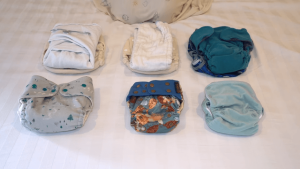
Flat cloth diapers, a classic choice in cloth diapering, offer affordability and versatility. These diapers consist of a single-layered square or rectangular piece of fabric that you fold to create absorbency. Here are some pros and cons of flat-cloth diapers:
Pros
- Inexpensive choice for budget-conscious parents.
- Quick-drying due to single-layered design.
- Highly customizable absorbency with versatile folding.
- Ideal for handwashing.
- Versatile, usable for overnight with a wool cover and as burp cloths.
- One-size-fits-all for babies of all sizes.
Cons
- Folding is required, which may intimidate some parents.
- The learning curve for beginners is easily teachable.
- It’s a slightly bulkier fit compared to other diaper types.
- It requires a separate diaper cover for water proofing.
Absorbency Sheet
The contoured fabric piece, which serves as both the diaper and the absorbing layer, requires parents to change it with each use since it absorbs all the liquid. Typically made from cotton, these contoured cloth diaper inserts are essential for effective diapering. The covers are designed using water-resistant fabrics, including hemp, bamboo, and wool, providing added protection and durability.
Accessory Recommendations:
- Wet Bag:
- Cloth Diaper Cover:
- Diaper Liner:
- Cloth Diaper Fasteners:
Pre-fold cloth diapers
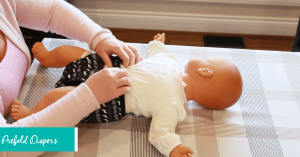
The structure of a pre-fold diaper undergoes intricate stitching to form a multi-layered, rectangular fabric. These are accessible in cotton, bamboo, hemp, and eco-friendly variants. Depending on your infant’s dimensions and requirements, pre-folds are available in various sizes, from small to large.
You can manipulate pre fold diapers by folding and securing them with a fastener or by trifold application within a cover. Once you grasp the technique, it becomes an economical and pragmatic choice, rendering it an exceptional selection for those seeking an economically efficient alternative to augment absorbency.
Pros:
- Very versatile and adaptable.
- Although it may initially be challenging, you can teach caregivers how to use it.
- It is a very affordable and effective cloth diapering option.
Cons:
- We need to size up as the baby grows.
- It may be challenging for caregivers to use initially, but you can teach them.
- Teach in a Slightly bulkier fit.
- You need a diaper cover for waterproofing.
Absorbency Sheet:
Pre-folded padded diapers, made from natural fabrics like cotton, hemp, or bamboo, excel in nighttime absorbency. However, to keep things leak-free, they require a waterproof cover to protect against wetness and provide your baby with a comfortable night’s sleep.
Accessory Recommendations:
- Wet Bag
- Cloth diaper cover
- Diaper liner
- Cloth Diaper Fasteners
Pocket Cloth Diapers:
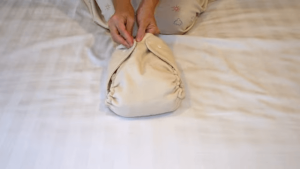
Pocket cloth diapers are one of the most popular cloth diapering options today. They consist of a waterproof outer shell with a pocket opening and an absorbent insert placed inside the pocket. In the pocket opening, a stay-dry material (usually fleece or suede cloth) keeps the baby dry even when wet. Pocket diapers are known for their convenience and customizable absorbency.
A particular variation among pocket diapers is the sleeve cloth diaper, thoughtfully stitched on just two sides instead of the typical three. This unique design enables convenient access to the diaper’s pocket from both the front and back, adding to its practicality and versatility.
Pros
- Customizable absorbency with various inserts (microfiber, cotton, bamboo, hemp).
- Stay dry lining for added comfort.
- User-friendly, like disposable diapers.
- There is no need for an extra waterproof cover, as the outer shell is already waterproof.
Cons
- After each use, complete washing is required for the pocket diaper and outer shell.
- More pocket diapers may be needed in your rotation, resulting in increased laundry.
- Slightly bulkier compared to some alternative cloth diaper options.
Absorbency Sheet:
. Inside the diaper’s pocket is an absorbent insert. This insert can be made of various materials, including microfiber, cotton, bamboo, or hemp, depending on your preference for absorbency and softness.
Accessory Recommendations:
Wet Bag:
Additional Inserts:
Diaper Liner:
Cloth Diaper Fasteners:
All-in-one cloth diapers (AIO)
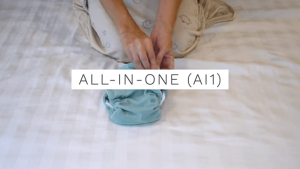
All-In-One (AIO) Diapers: AIO diapers are one-piece cloth diapers with a waterproof exterior and an attached absorbent interior. Disposable diapers are designed to be convenient and user-friendly, making them easy to use for anyone.
Pros
- Easy to use, suitable for beginners.
- There is no need for additional covers or stuffing.
- Convenient for caregivers.
- Ideal for traveling.
Cons
- Longer drying time, especially for sewn-in insert AIOs.
- Compared to other types of diapers, it can be more costly.
- When soiled, the diaper must be changed completely.
- Some may require additional inserts for extra absorbency.
Absorbency Sheet:
In the context of cloth diapers, the absorbing layer refers to the part of the diaper responsible for soaking up and containing moisture, primarily your baby’s urine. In the case of All-in-One (AIO) diapers, the absorbing layer is a crucial component. It is sewn or attached to the diaper fabric and is designed to provide the necessary absorbency to keep your baby dry.
The passage notes that AIO diapers have an absorbing layer built into the diaper, making them a one-piece system. It is a distinguishing feature of AIO diapers compared to other cloth diaper styles, such as pre-folds or pocket diapers, where you may need to insert or fold additional absorbent materials.
Accessory Recommendations:
Wet Bag:
Diaper Liner:
Doubler:
All-in-two cloth diapers (AI2)
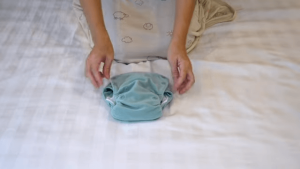
All-in-Two (AI2) or Hybrid cloth diapers are a versatile diapering system designed for convenience and cost-effectiveness. This system comprises a waterproof outer shell or cover and a separate absorbent soaker or insert.
The critical feature of AI2 diapers is that the cover can be reused multiple times before washing, making them an economical choice for parents. AI2 diapers feature a waterproof outer shell and a detachable absorbent insert. You can replace the soiled insert while reusing the cover during a diaper change.
AI2 diapers often have different closure options, including snaps or hook-and-loop (Velcro) fasteners. The inserts are composed of both natural fibers and microfibers
Pros
- Reusable covers for cost-effectiveness.
- Custom-fit with adjustable absorbency via inserts.
- Convenient and space-saving for travel and on-the-go use.
Cons
- Varying insert compatibility among AI2 diaper brands.
- Initial costs can be high but cost-effective in the long term.
- The potential need for different insert sizes as your baby grow.
Absorbency Sheet:
In AI2 cloth diapers, the absorbing layer refers to the detachable insert that soaks up moisture. Materials like cotton, bamboo, hemp, and microfiber can be used for this insert. you can choose according to your preference.
The absorbing layer is designed to be easily removed and replaced when changing the diaper, allowing you to reuse the waterproof cover.
Accessory Recommendations:
Wet Bag.
Inserts.
Diaper Liner.
Fitted cloth diapers.
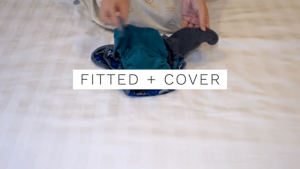
Fitted cloth diapers are a type of cloth diaper that closely resembles disposable diapers in shape and fit. They are hourglass-shaped and feature elastic around the legs and back, ensuring a snug and comfortable fit for your baby.
Fitted diapers are highly absorbent and effective at containing messes. They typically come with either snap or hook-and-loop (Velcro) closures.
Fitted diapers are contoured to fit your baby’s shape, eliminating the need for folding. Unlike flats and pre folds, they come in ready-made shapes, making them easier to use.
However, fitted diapers are not waterproof on their own and require a separate waterproof cover.
Fitted cloth diapers are favored for their excellent absorbency and comfortable fit, making them a reliable choice for many cloth diapering families, especially for overnight use.
Pros
- High absorbency, great for overnight and heavy wetters.
- With a contoured shape and elasticized design, these earplugs provide a comfortable and secure fit.
- Improved airflow without a cover, reducing diaper rash risk.
- It is easy to put on and adjust, making them caregiver-friendly.
Cons
- Longer drying time due to higher absorbency.
- It can create a bulkier “fluff butt” appearance on your baby.
- It requires a separate diaper cover for waterproofing.
- Additional accessories like covers may increase costs.
Absorbency Sheet:
The absorbing layer in a fitted cloth diaper is essentially the entire diaper. Fitted diapers are made from absorbent materials such as cotton, bamboo, hemp, or fleece throughout the diaper. This design ensures maximum absorbency and coverage.
Accessory Recommendations:
- Wet Bag
- Cloth Diaper Cover
- Diaper Liner
- Cloth Diaper Fasteners
Contoured Diapers
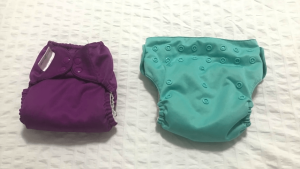
Contoured diapers are a budget-friendly choice for parents interested in cloth diapering. Their hourglass shape simplifies the diapering process, reducing the need for intricate folding. These diapers typically require a separate waterproof cover for leak protection. While they may require fasteners, contoured diapers offer a comfortable fit for babies. Eco-conscious parents will also benefit from their relatively quick drying time..
Pros:
- Inexpensive option
- Shorter dry time (12 hours or less)
- Reusable cover
- Reduced leakage compared to other types
Cons:
- Two-piece system
- Requires pinning.
- It may be less user-friendly for others.
- Price: Affordable, typically $10-$15 per diaper
- Best for Cost-conscious individuals
- Drying: Less than 12 hours
- Fastener: Fasteners or pins
- of pieces: Two
- Difficulty level: Easy
Absorbing Sheet:
The absorbing layer in contoured diapers is the fabric piece that functions as the diaper. It must be changed with each use as it absorbs all liquid. Typically, cotton is used for the cloth diapering fabric, while covers are available in water-resistant materials like hemp, bamboo, and wool.
Accessory Recommendations:
- Waterproof covers
- Diaper fasteners or pins
Swim Diapers
Swim diapers serve a unique function, primarily designed for use in pools or at the beach. They differ significantly from regular non-disposable diapers, as their purpose is not to absorb moisture but to provide a protective layer if your baby goes potty while in the water.
Absorbing Sheet:
The absorbing layer in swim diapers is thin and not designed to hold substantial liquid. It prevents leaks into the pool. It would help to wash your diaper, both the outer shell and the absorbent layer, after you finish using it.
Pros
- Ideal for swimming
- Offers UPF 50+ sun protection.
- Lightweight and comfortable
Suitable for Use in water-based activities
Cons
- Thin and not absorbent, only designed for containment.
- Multiple swim diapers may be needed.
- Intended for Use exclusively during water activities.
Types of cloth diapers inserts
Cloth diaper inserts come in various materials, including cotton, hemp, bamboo, microfiber, and Zorb. These materials are chosen for their absorbent properties and comfort for babies.
Soakers, which are the absorbent layers within cloth diapers, can be made of these materials and sometimes have a top layer of microfleece, cotton, or bamboo velour. It keeps the baby’s skin dry and comfortable by wicking moisture away from it.
Cover and Closure Options for Cloth Diapers
Regarding cloth diapers, various cover and closure options cater to different preferences and needs. Here’s an overview of some common cover and closure options:
Cover Materials:
Discover the wonders of Polyurethane Laminate (PUL) fabric – a remarkable material that guarantees water resistance, making it the ideal choice for cloth diaper covers. With its superior ability to prevent leaks, PUL has quickly gained popularity among parents who seek reliable and effective solutions for their little ones.
TPU, or Thermoplastic Polyurethane, is versatile with heat-reactivity and water resistance. In diaper covers, it creates a layer that looks like fabric.
Although TPU shares similarities with PUL (Polyurethane Laminate), it’s important to note that TPU is not a fabric. Instead, it boasts a thin, stretchy plastic layer providing exceptional functionality and protection.
Wool: If you’re looking for a natural and breathable alternative to PUL/TPU covers, wool covers are an excellent choice. Wool fibers possess unique moisture-repelling properties that effectively redirect moisture back into the absorbing layer, ensuring leaks stay at bay. Invest in wool covers for a comfortable, Sustainable solution aligned with your eco-values. Wool covers are a fantastic option for maintaining moisture-repelling capabilities. However, keep analysing them to maintain their condition is essential. Additionally, these covers have specific instructions for cleaning and care that should be followed carefully. Rest assured, with proper maintenance, wool covers will continue to provide excellent performance and keep your items protected.
Fleece: Experience the ultimate comfort for your baby with fleece diaper covers. They’re soft and gentle on your little one’s skin, preventing them from getting rashes. These covers also promote air circulation, ensuring optimal freshness. If you’re concerned about using animal products or looking for a budget-friendly option, fleece covers are the perfect choice.
Closure Options:
Snaps: Snaps are plastic closures that come in various colors. They secure the diaper at the waist and can be found on size-adjusting covers and fitted diapers. Snaps are durable and provide a secure fit, making them less likely to be opened by curious toddlers.
Aplix/Hook & Loop (Velcro): Aplix, hook, and loop closures resemble Velcro. They have grippy and fuzzy sides that stick together for quick and easy fastening. However, they can collect lint and other debris over time, reducing their effectiveness.
Safety Pins: Safety pins are used for fastening pre folds, flats, or contour diapers. Cloth diaper-specific safety pins usually have protective plastic layers on the ends to prevent accidental pinching.
This closure method requires manual fastening. Each cover and closure option has its advantages and considerations. The choice depends on personal preference, ease of use, durability, and budget.
Additionally, some diaper styles may be compatible with specific cover and closure types. For example, all-in-ones, hybrids, and pocket diapers often use snaps or hook and loop closures, while pre folds, flats, and contours require safety pins or other fasteners.
Choosing to cover and closure options that align with your cloth diapering needs and ensure a comfortable and leak-free experience for your baby is essential.
Sizes
When it comes to cloth diapers, there are several diaper sizes to choose from, each designed to accommodate babies of different ages and sizes. Here’s an overview of the common cloth diaper sizes:
Newborn: Newborn cloth diapers are designed to fit infants in their earliest weeks or months. They are smaller and have a snug fit, ensuring a comfortable and secure diapering experience for newborns.
Sized Diapers: types of cloth diapers for babies
Sized diapers offer convenience by coming in specific size ranges such as small, medium, and large. It’s important to note that the exact size ranges may differ slightly between manufacturers, so it’s always a good idea to consult the brand’s sizing recommendations.
Our diaper sizes cater to babies of different weights. The small size is perfect for little ones weighing around 10-17 pounds, while the medium size comfortably fits babies weighing about 17-27 pounds. And for our bigger bundles of joy, the large size is designed for babies weighing 27 pounds or more.
Some manufacturers may also offer extra-large (XL) sizes for children over 35 pounds. Sized diapers provide a tailored fit for your baby at each stage of their development, ensuring a secure and comfortable fit.
However, you will need to purchase different sizes as your baby grows, which can be a consideration in terms of cost.
One-Size Diapers (OS):
One-size diapers are designed to be adjustable and versatile, fitting babies from around 10 pounds through toddlerhood. They typically feature rows of snaps or hook-and-loop fasteners that allow you to customize the diaper’s size to accommodate your baby’s growth.
Additionally, many one-size diapers have adjustable elastic bands around the legs, providing further flexibility in sizing.
One-size diapers are often considered a cost-effective choice because they can be used for an extended period as your baby grows. However, it’s important to note that the elastic and fasteners may experience wear and tear over time, especially with frequent use.
The good news is that many one-size diapers offer replaceable elastic, allowing you to extend their lifespan. Choosing between sized diapers and one-size diapers depends on your preferences and priorities.
Sized diapers provide an excellent fit for each stage but may require purchasing multiple sizes. One-size diapers offer versatility and long-term use but may require occasional maintenance and adjustments. Consider your baby’s growth rate, budget, and convenience when deciding.
FAQs
Q-1 What are some reasons to use cloth diapers on a baby?
Cloth diapers: cost-effective, eco-friendly, and healthier for babies.
Q-2 Are cloth diapers worth using for babies?
Yes, cloth diapers are worth using as they are eco-friendlier and gentler on a baby’s skin than disposable diapers.
Q-3 How much of a hassle are cloth diapers?
Cloth diapers can be comfortable and cost-effective in the long term. Still, they pose challenges with daycare acceptance and increased laundry frequency, making them somewhat of a hassle for some parents.
Q-4 Can I use pocket diapers as a cover?
Yes, you can use pocket cloth diapers as covers by simply leaving the pocket empty and placing an insert inside the cover, then fastening it onto your baby.
Q-5 How Many Cloth Diapers Do I Need?
Aim for a minimum of 36 cloth diapers for newborns, 24 for infants, and 20 for toddlers to ensure you have 2-3 days’ worth of diapers. The exact number may vary based on your baby’s age and laundry routine.
Q-6 Are Cloth Diapers Better for the Environment?
Yes, cloth diapers are better for the environment as they contain fewer plastics and toxic chemicals and are made from natural and organic materials like hemp and cotton.
Q-7 How long do newborn cloth diapers last?
Newborn cloth diapers can last around 400 washes before significant degradation, but they will wear over time, like clothing with frequent washing.
Q-8 How long do cloth diapers last?
The longevity of cloth diapers depends on the care. With proper care, they can last for several years.
Q-9 Do you save money using cloth diapers?
Yes, you can! Disposable diapers cost around $2,000-$3,000 from birth to three, while a complete set of cloth diapers can be as low as $300, though typically $500-$800. Using cloth diapers can lead to significant cost savings.
Q-10 Do cloth diapers work overnight?
Yes, using cloth diapers at night is possible, but extra inserts are needed for better overnight absorbency.
Final Words.
Cloth diapers come in different types, each with its advantages and disadvantages. Whether you opt for pocket diapers, all-in-ones, pre folds, or flats, the key is choosing type of cloth diapers for newborns that best aligns with your lifestyle, budget, and environmental preferences. With the right choice and proper care, cloth diapers can offer an eco-friendly, cost-effective, and versatile solution for your baby’s needs, contributing to your child’s comfort and a greener planet.
Also read.
- best cloth diapers.
- best hybrid cloth diapers.
- How to put inserts in cloth diapers.
- Benefits of cloth diapers.
- Reviews on reddit.
- stinky cloth diapers
- Benefits of cloth diapers
- All in two cloth diapers
- Fitted cloth diapers
- All in one cloth diapers
- How to sanitize cloth diapers
- Benefits of cloth diapers
- How to strip cloth diapers
- Why are my pocket cloth diapers leaking

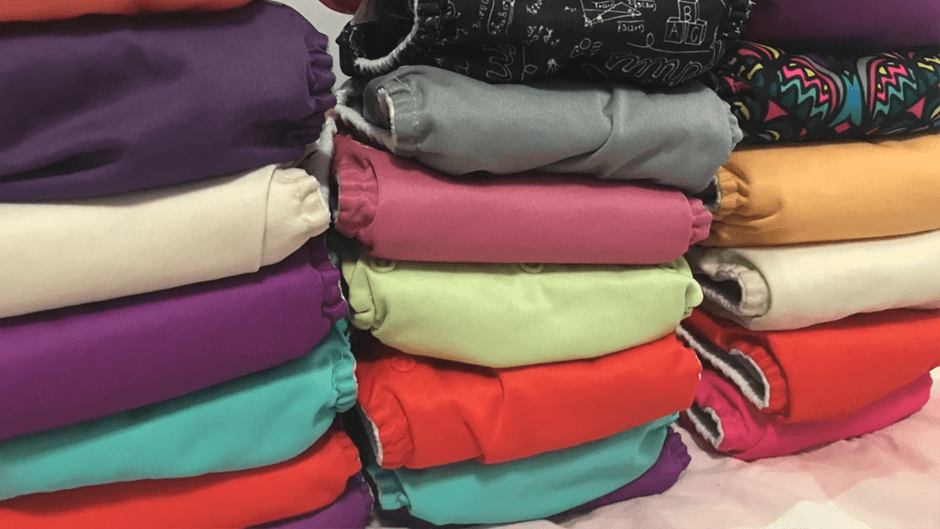
4 thoughts on “Types of cloth diapers for newborns”